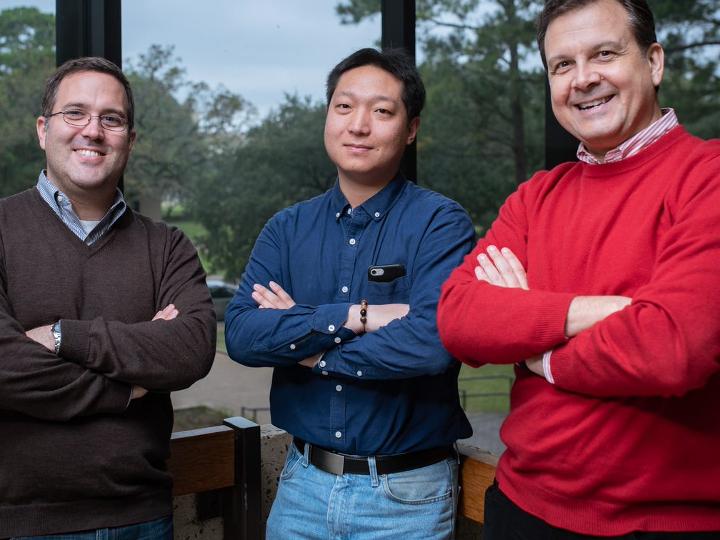The work also has implications for speeding drug development

Credit: University of Houston
The process of crystallization is central to drug development, petrochemical processing and other industrial actions, but scientists say they still are learning about the complex interactions involved in the building and dissolution of crystals.
Researchers from the University of Houston and the Université libre de Bruxelles reported in the journal Nature that they have for the first time demonstrated at the molecular level what happens when two compounds known to inhibit crystal growth – in this case, antimalarial drugs – were combined. The results were unexpected.
“You would expect using two drugs that attacked crystallization in two different ways would be synergistic, or at the very least additive,” said Jeffrey Rimer, Abraham E. Dukler Professor of Chemical and Biomolecular Engineering at UH and a co-author of the paper. “Instead, we found that they can work against each other.”
Working against each other, known as antagonistic cooperation, meant that the drugs were actually less effective in tandem than individually. Peter Vekilov, John and Rebecca Moores Professor of Chemical and Biomolecular Engineering and Chemistry at UH and another co-author, said the work will allow the design of more effective treatments for malaria, a mosquito-borne disease that killed 435,000 people in 2017, most of them children in Africa.
But more broadly, it suggests a new way to screen molecules for their potential in drug development, allowing new treatments to be developed more quickly.
“When you are using modifiers, a small change in the molecule’s structure can dramatically alter its performance,” Rimer said.
Malaria is caused by a parasite, which consumes hemoglobin and leaves behind a compound known as hematin, which the parasite sequesters inside a crystal. Antimalarial treatments work by inhibiting the crystal growth, freeing hematin to attack the parasite.
For this work, the researchers studied the growth of hematin crystals in the presence of four antimalarial drugs – chloroquine, quinine, mefloquine and amodiaquine – which work in one of two distinct ways.
Both computationally and experimentally, including through the use of atomic force microscopy, the researchers demonstrated how compounds which attack crystallization by two different mechanisms behave when combined. The resulting molecular-level understanding of that behavior suggests a new mechanism for materials science, Vekilov said.
“This mechanism may provide guidance in the search for suitable inhibitor combinations to control crystallization of pathological, biomimetic, and synthetic materials,” the researchers wrote. “In a broader context, our results highlight modifier interactions mediated by the dynamics and structures on the crystal interface as a prime element of the regulation of the shapes and patterns of crystalline structures in nature and industry.”
###
In addition to Vekilov and Rimer, researchers involved with the project include UH Ph.D. student Wenchuan Ma and collaborator Dr. James Lutsko of the Université libre de Bruxelles.
Media Contact
Jeannie Kever
[email protected]
713-743-0778




